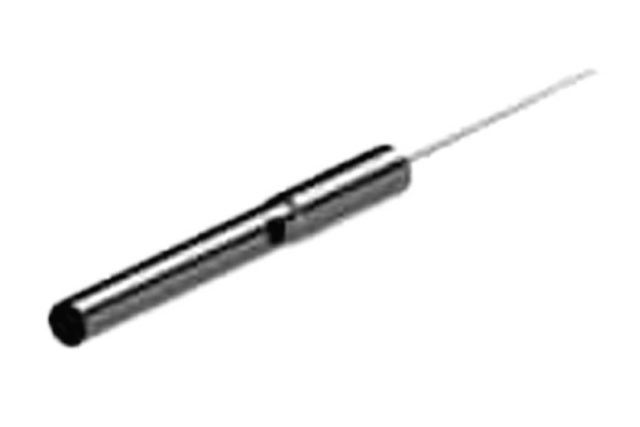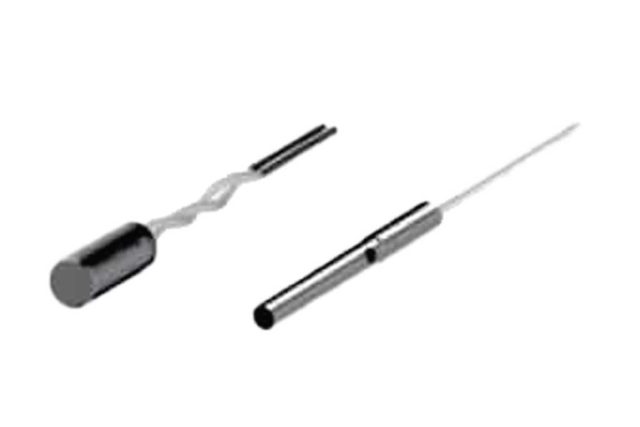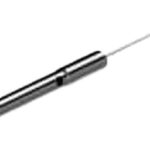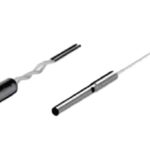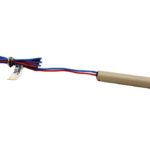Exploding Bridgewire Detonator
Product Description
Fluid & Disabled Exploding Bridge Wire
Where radio frequency (RF) safety is absolutely crucial in your perforating operation, we offer both fluid-disabled and standard exploding bridgewire detonators. Our Exploding Bridge Wire (EBW) contains a lead-free explosive (CLCP) functioned with an ECOSSE PX-1 Firing Set and initiate secondary booster detonation in wireline guns. Exploding bridge wires (EBW) detonators have a small wire imbedded in with ignition material. When sufficient electrical current is passed over the wire, the wire explodes and initiates detonation by the resulting shockwave.
Our Exploding Bridgewire Detonators entail two critical components, the thin wire bridging a gap which makes contact with the explosive device and a high-voltage source of electricity which produces a consistent, fast starting pulse. Once the wire has created a connection across the voltage, a high electric current instantly vaporizes the wire (in essence melting it) in milliseconds. Both the shockwave and the heat will then set of the desired pyrotechnic reaction train and explosive device. An important note is there is no lead azide nor any primary explosive in our EBW detonators, making them extremely insensitive to accidental initiation.
These devices require a high-energy discharge from a capacitor for detonation. If ignited from low energy current, the device will not produce detonation, allowing the operation to be insensitive to accidental initiation. EBWs are effectively immune to radio frequency (RF) sources and stray voltages that may be found on well sites and offshore platform. Our EBWs are capable of operating at 400°F for up to 16 hours.
To learn more about how EBWs work explicitly, here is an excellent article “A Review of the Mechanism by Which Exploding Bridge-wire Detonators Function” from The Royal Society
Key Features
Exploding Bridgewire Detonator Functions
Wireline Perforating Initiation Bottom Hole Assemblies (BHA) typically consist of a ported housing, electric detonators, perforating guns, a setting tool initiator, and a plug. Available detonator options include the Exploding Bridgewire (EBW) detonator which has been used to reliably initiate downhole BHA for perforating and severance/cutter operations in the oil and gas industry since 1994. EBW detonators enable operators to continue cell phone and Radio Frequency (RF) communications at the job site during field assembly and arming operations, resulting in increased operational efficiency and enhanced job site safety. No special firing panel is required for EBW detonators although a separate down-hole fire-set is required for the EBW. Fluid disabled and interruptible versions are available.
Specifications
- All-Fire
3755V (ECOSSE PX-1) - No-Fire
1.893ADC - Operating Temperature
–65°F (-54°C) to + 400°F (204°C) - Output
Detonation – tailored output for booster or detonation cord initiation - Temperature Rating
400°F (204°C) for 16 hours - Application Specifications
- Fluid Disabled available
- RF Safe
- Exploding Bridgewire Initiation
- Electrostatic Discharge ESD) MIL-DTL-23659
- Initiates RDX and HSM Boosters
- Does not initiate boosters in fluid
FAQ's
-
How do detonators work?
These devices require a high-energy discharge from a capacitor for detonation. If ignited from low energy current, the device will not produce detonation, allowing the operation to be insensitive to accidental initiation.
-
How do you make wires explode?
Our Exploding Bridge Wire (EBW) contains a lead-free explosive (CLCP) functioned with an ECOSSE PX-1 Firing Set and initiate secondary booster detonation in wireline guns.
